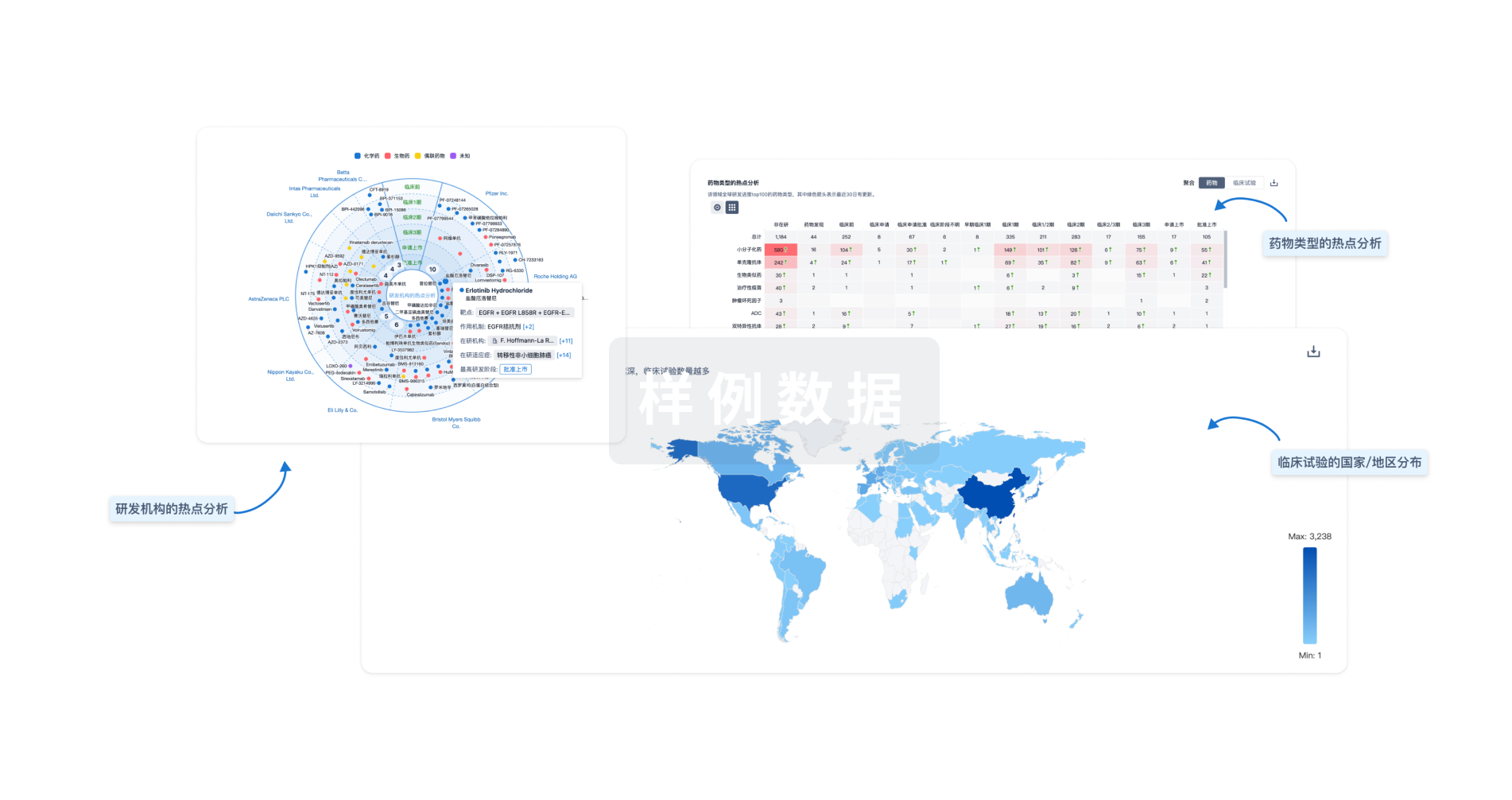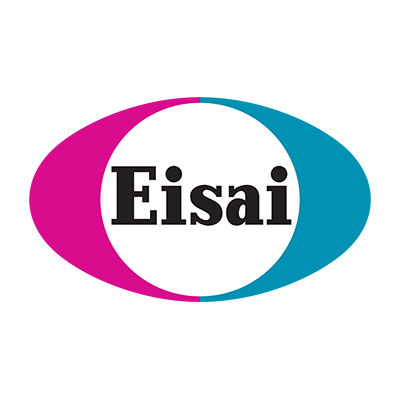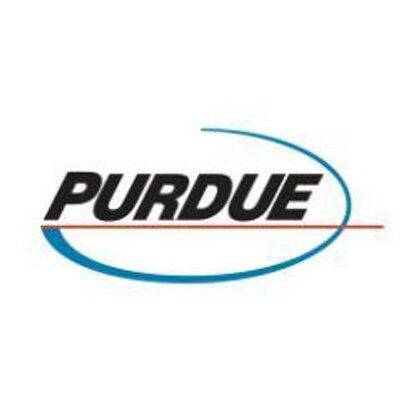预约演示
更新于:2025-05-07
Intervertebral Disc Displacement
椎间盘移位
更新于:2025-05-07
基本信息
别名 Bulging disk、Compressed disk、DISC PROLAPSE + [147] |
简介 An INTERVERTEBRAL DISC in which the NUCLEUS PULPOSUS has protruded through surrounding ANNULUS FIBROSUS. This occurs most frequently in the lower lumbar region. |
关联
33
项与 椎间盘移位 相关的药物作用机制 硫酸软骨素蛋白聚糖调节剂 [+1] |
在研机构 |
原研机构 |
非在研适应症- |
最高研发阶段批准上市 |
首次获批国家/地区 日本 |
首次获批日期2018-03-23 |
作用机制 κ opioid receptor激动剂 [+1] |
在研机构 |
原研机构 |
最高研发阶段批准上市 |
首次获批国家/地区 美国 |
首次获批日期2010-06-30 |
1,387
项与 椎间盘移位 相关的临床试验NCT05971329
Pilot Study of ZetaFuse™ Bone Graft for the Treatment of Cervical Degenerative Disc Disease
The goal of this pilot clinical trial is to test the safety and preliminary performance of the ZetaFuse Bone Graft in patient requiring fusion of the C3-C7 vertebral bones due to pain or loss of neurological function.
Participants will be treated with ZetaFuse during surgical intervention to reduce pain and the loss of neurological function.
Participants will be treated with ZetaFuse during surgical intervention to reduce pain and the loss of neurological function.
开始日期2026-09-01 |
申办/合作机构 |
DRKS00031819
Sponsor-initiated, prospective, monocentric, non-interventional clinical observational study (AWB) to evaluate the Transmaxx® ALIF Cage in spine surgery use according to the intended purpose. - PMCF Transmaxx system
开始日期2025-12-31 |
申办/合作机构- |
NCT06839430
Therapeutic Effect of Using Injectable Hypertonic Saline 5% Versus Injectable Dextrose 20% on Pain in Painful Cases of Disc Displacement with Reduction ( a Randomized Clinical Trial)
This study is aiming to assess effect of hypertonic saline 5% in comparison to dextrose 20% on pain ,inter-insical opening and movements of jaw in painful cases of disc displacement with reduction
开始日期2025-08-20 |
申办/合作机构 |
100 项与 椎间盘移位 相关的临床结果
登录后查看更多信息
100 项与 椎间盘移位 相关的转化医学
登录后查看更多信息
0 项与 椎间盘移位 相关的专利(医药)
登录后查看更多信息
19,828
项与 椎间盘移位 相关的文献(医药)2025-12-31·Journal of Investigative Surgery
Effects of Hsa-miR-4741/LILRB2 on Senescence of Nucleus Pulposus Cells and Their Prognostic Values in Lumbar Disc Herniation
Article
作者: Wang, Gang-Gang ; Guo, Xiu-Quan ; He, Zhendong ; Lin, Mingjian ; Zheng, Nan
2025-12-31·NMC Case Report Journal
Pitfalls in the Diagnosis and Treatment of Low Back Pain in an Elite Para-athlete Successfully Treated by Transforaminal Full-endoscopic Discectomy with Thermal Annuloplasty: A Case Reports
Article
作者: MIZUTANI, Kozaburo ; KANDA, Yutaro ; SUGIURA, Kosuke ; SOEDA, Saori ; TEZUKA, Fumitake ; YAMASHITA, Kazuta ; KUMON, Masashi ; SAIRYO, Koichi ; MORIMOTO, Masatoshi
2025-12-01·Current Pain and Headache Reports
How Painful are Lumbar Hernias? A Comprehensive Review of Intervention Strategies
Review
作者: Grande-Alonso, Mónica ; Sebastián-Martín, Alba ; Aguado-Henche, Soledad ; Moreno-Gómez-Toledano, Rafael ; Méndez-Mesón, Irene
144
项与 椎间盘移位 相关的新闻(医药)2025-04-22
No Surgery. No Scalpels. No Recovery Time. Tremors Gone in Minutes.
MIAMI, April 22, 2025 /PRNewswire/ -- For millions living with Essential Tremor (ET), simple tasks like eating, writing, or holding a drink can feel impossible. Now, the Miami Neuroscience Center at Larkin is offering a revolutionary solution: Focused Ultrasound — a
non-invasive, FDA-approved treatment delivering immediate relief without surgery or recovery time.
Led by internationally renowned neurosurgeon
Dr. Aizik Wolf, this state-of-the-art procedure is
changing lives in real time.
"We're seeing patients walk out of treatment tremor-free within hours," said Dr. Wolf, Medical Director at Miami Neuroscience Center. "The transformation is instant and life-changing."
Why This Matters
Essential Tremor affects over
10 million Americans. Until now, treatment options included invasive brain surgery or lifelong medications.
Focused Ultrasound is a game-changer:
No scalpels, cuts, or anesthesia
FDA Approved
MRI-guided precision
Outpatient procedure — patients go home with results the same day
Covered by Medicare and most major insurance plans
This cutting-edge technology uses
targeted sound waves to treat the area of the brain responsible for tremors — with
no incisions or implants required.
Real People. Real Results.
"I couldn't hold a cup of coffee without spilling. After the procedure, I signed my name for the first time in 15 years."
— Patient testimonial, Miami Neuroscience Center
Watch the Transformation
Spanish Video Version
Before & After View
Media Access
Interviews available with:
Dr. Aizik Wolf
Dr. Jose Valerio
Real patients with before-and-after success stories
High-res images and video upon request
Schedule a Consultation or Learn More:
Call: (786) 871-6806
Email: [email protected]
About Miami Neuroscience Center at Larkin
Part of Larkin Health System, the
Miami Neuroscience Center is a state-of-the-art facility offering advanced, patient-focused care for neurological conditions including brain tumors, AVMs, herniated discs, migraines, trigeminal neuralgia, and more. Treatments include
Focused Ultrasound
, Gamma Knife®, Zap-X®, and
Airo® technology.
Learn more:
CONTACT: Frances Rodriguez | Marketing Director | [email protected]
SOURCE Miami Neuroscience Center at Larkin
WANT YOUR COMPANY'S NEWS FEATURED ON PRNEWSWIRE.COM?
440k+
Newsrooms &
Influencers
9k+
Digital Media
Outlets
270k+
Journalists
Opted In
GET STARTED
2025-03-28
Davenport, Iowa, March 28, 2025 (GLOBE NEWSWIRE) -- Abundant Health Physical Medicine, a leading integrative wellness clinic in the Midwest, is transforming the treatment of neuropathy, chronic joint pain, autoimmune conditions, and spinal health through its cutting-edge RENEW Protocols. By leveraging advanced regenerative medicine, spinal decompression therapy, and holistic wellness solutions, the clinic is providing patients with lasting relief - without surgery or long-term medications. A Natural Approach to Healing Chronic Conditions For millions suffering from nerve pain, degenerative joint conditions, and autoimmune diseases, conventional treatments often involve medications that merely mask symptoms rather than address the root cause. Abundant Health Physical Medicine is changing this narrative with a root-cause-based, regenerative approach that nourishes, restores, and heals the body naturally. Led by Sinan Gocmen, CEO and Founder, the clinic specializes in non-invasive, evidence-based therapies designed to regenerate damaged tissues, optimize cellular function, and restore overall health. Their mission is to help patients reclaim their mobility, vitality, and quality of life—without the risks and downtime associated with invasive procedures. The clinic’s regenerative medicine services are also overseen by Amanda Alongi, FRNP, a Certified Nurse Practitioner in Regenerative Medicine who manages the clinic’s stem cell treatments, bringing a high level of expertise and patient care to every procedure. Introducing the RENEW Protocols: The Future of Regenerative Healing Abundant Health Physical Medicine’s unique RENEW Protocols are tailored to help patients reverse neuropathy, repair damaged joints, rebalance autoimmune dysfunction, and relieve spinal conditions naturally. These protocols integrate cutting-edge therapies, including: 1. Reverse Neuropathy Naturally: Nourish Nerves & Restore Function Neuropathy sufferers often experience chronic numbness, tingling, burning pain, and loss of sensation due to nerve damage. The RENEW Protocol for Neuropathy focuses on nerve regeneration and inflammation reduction using: Red Light Therapy – Stimulates cellular repair and circulation. Softwave Regenerative Therapy – Promotes healing at the cellular level. Whole-Body Vibration Therapy – Enhances nerve communication and function. Hyperbaric Oxygen Therapy – Boosts oxygen levels to optimize nerve regeneration. Targeted Nutritional Protocols – Provide essential nutrients to support nerve repair. 2. Regenerative Medicine for Joint Conditions: Repair, Rebuild & Restore Mobility For those suffering from osteoarthritis, cartilage damage, or chronic joint pain, Abundant Health Physical Medicine offers advanced regenerative medicine solutions, including: Stem Cell Therapy & Biologic Injections – Stimulate the body’s natural healing response to repair joint tissue. Softwave Regenerative Therapy – Increases circulation and reduces inflammation. Non-Surgical Joint Decompression – Alleviates pressure on damaged joints for pain relief. 3. Autoimmune Disease Natural Treatment: Restore Cellular Energy & Immune Balance Autoimmune diseases often result from cellular energy depletion and immune system dysfunction. The AiRenew Protocol is designed to: Rebuild mitochondrial energy production at the cellular level. Balance the immune response to reduce inflammation and prevent further damage. Implement functional nutrition and detoxification to help the body reset and heal. 4. Non-Surgical Spine and Disc Therapy: Relieve Chronic Pain Without Surgery Back pain, herniated discs, and degenerative spinal conditions don’t always require surgery. Abundant Health Physical Medicine specializes in spinal decompression therapy, a gentle, non-invasive approach that: Alleviates pressure on compressed nerves and discs. Increases oxygen and nutrient flow to damaged spinal tissues. Combines postural correction techniques with regenerative therapies for long-term relief. A Leader in Holistic, Root-Cause Regenerative Healthcare Abundant Health Physical Medicine is not just another pain management clinic. They empower patients with real solutions that go beyond symptom relief—helping them restore their bodies and their lives. Their integrative approach makes them a trusted leader in holistic, non-surgical pain relief and regenerative medicine. Take the First Step Toward Natural Healing Abundant Health Physical Medicine is offering free consultations for those seeking lasting pain relief without surgery or medications. Call 563-275-6332 or visit www.getabundanthealth.com to schedule a consultation today! Stay connected for more updates and patient success stories: Facebook: Quad Cities Regenerative Medicine Instagram: @abundanthealthphysmed TikTok: @abundanthealthphysmed YouTube: @abundanthealthphysicalmedi3867 Media Contact
Company Name: Abundant Health Physical Medicine
Contact Person: Emily Castillo
Email: info@getabundanthealth.com
Business Phone: 563-275-6332
Country: United States
Website: http://www.getabundanthealth.com/
细胞疗法
2025-03-10
Gleamer, leading company in AI medical imaging, today announces that it acquires Pixyl, a pioneer in FDA- and CE-cleared Neuro MRI applications, and Caerus Medical, developer of cutting-edge Lumbar MRI AI solutions. These strategic acquisitions position Gleamer as the only AI provider with an unmatched, proprietary suite of solutions covering all core imaging modalities—X-ray, Mammography, CT, and now, MRI—further solidifying its leadership in the radiology AI market. With its robust portfolio, Gleamer is redefining the future of AI-powered radiology, providing radiologists with best-in-class tools that optimize efficiency, enhance diagnostic accuracy, and accelerate patient care. This latest expansion ensures that Gleamer remains the first choice for institutions seeking comprehensive AI integration across their imaging workflows. “With the addition of Pixyl and Caerus Medical, Gleamer now offers the most extensive proprietary AI-driven imaging portfolio in the industry. This move marks a transformative leap forward, empowering radiologists with cutting-edge MRI applications while strengthening our leadership in medical imaging AI,” said Christian Allouche, CEO & co-founder of Gleamer. “These acquisitions underscore our unwavering commitment to revolutionizing radiology, accelerating the adoption of AI, and delivering superior diagnostic precision.” Pixyl, an award-winning innovator in brain MRI analysis, is recognized for its flagship product Pixyl.Neuro, which has already gained significant traction. The software enables the early detection of neuroinflammatory and neurodegenerative conditions, including Alzheimer’s disease, unlocking life-changing opportunities for early intervention. With new reimbursement pathways emerging in the U.S., Pixyl’s solutions are poised for rapid adoption, reinforcing its role at the forefront of AI-driven radiology innovation. “Joining Gleamer amplifies the impact of our technology, bringing our breakthrough MRI applications to a global audience,” said Senan Doyle, CEO of Pixyl. “Together, we are setting new standards in AI-powered radiology and driving the future of neuroimaging.” Caerus Medical’s AI technology revolutionizes lumbar spine MRI interpretation, offering unparalleled precision in detecting all relevant findings (disc herniation, stenosis, spondylolisthesis etc.). This comprehensive approach enhances workflow efficiency and diagnostic reliability, streamlining the reporting process for radiologists. “The Caerus Medical team is thrilled to become part of Gleamer, the leader in AI-powered radiology,” said David Vittecoq, CEO of Caerus Medical. “This collaboration will fast-track the deployment of our lumbar MRI application and drive groundbreaking advancements in musculoskeletal imaging.” With these acquisitions, Gleamer’s global workforce surpasses 100 employees across seven countries, bolstering its MRI research and development efforts. The integration of Pixyl and Caerus Medical within Gleamer’s AI Factory will accelerate innovation, ensuring the rapid deployment of next-generation imaging solutions that meet the evolving needs of modern radiology.
并购
分析
对领域进行一次全面的分析。
登录
或

生物医药百科问答
全新生物医药AI Agent 覆盖科研全链路,让突破性发现快人一步
立即开始免费试用!
智慧芽新药情报库是智慧芽专为生命科学人士构建的基于AI的创新药情报平台,助您全方位提升您的研发与决策效率。
立即开始数据试用!
智慧芽新药库数据也通过智慧芽数据服务平台,以API或者数据包形式对外开放,助您更加充分利用智慧芽新药情报信息。
生物序列数据库
生物药研发创新
免费使用
化学结构数据库
小分子化药研发创新
免费使用





